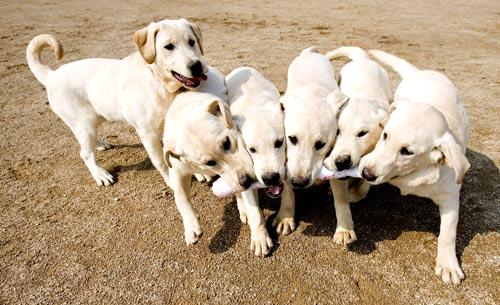This topic takes on average 55 minutes to read.
There are a number of interactive features in this resource:
 Biology
Biology
 PSHE / Citizenship studies
PSHE / Citizenship studies
Clones and cloning raise a lot of debate. Many people think it is an ethical imperative to use science to try and improve the well-being of people and animals. Much of what has been discussed in this resource demonstrates the ingenuity of scientists and doctors and their determination to use cloning techniques to help overcome problems from infertility and lack of organ donors, to species extinctions. Cloned animals have already been used to produce new medicines, to bring back much loved pets and to help scientists move towards the production of new tissues and organs for people with a wide range of diseases.
In the general, rather than the scientific, population, there are also many arguments against cloning - but not all of them are backed up by scientific fact or logic. Some people think that clones will somehow be different from normally-reproduced animals – but a clone is genetically exactly the same as any other organism of the species. Some people believe that clones are not unique, and that this is unnatural or demeaning to them. Because of the impact of their environment, every clone is actually unique – just not genetically unique - and clones are perfectly natural as any identical twins or triplets you may know will tell you. What’s more, artificially selecting and growing clones of crops has been carried out for centuries by humans.

Clones are very natural – and not necessarily identical, as the environment also plays a part!
Many ethical considerations focus on how clones will be used, taking into account both the welfare of the clone and the people the clone will help. It would be psychologically demeaning for someone to feel that the only reason for their existence (and their creation) was to provide tissue for transplantation or to replace a dead loved one. This is one of the reasons why reproductive cloning in humans is not allowed, even though it could be of medical benefit. On the other hand, reproductive cloning of animals is allowed, so it is possible to replace a favourite pet by cloning - but only if you are very wealthy (see the case study below). However, as the parent and its offspring will be exposed to different environments both in the uterus and once they are born, they are likely to behave in different ways, as well as possibly looking different. This use also brings into question the morals of the institution responsible for cloning: are they preying on the grief of people who have lost pets to make money, or are they offering a compassionate service which also help to fund research into medical uses of cloning?
In both humans and animals, reproductive cloning is currently very inefficient. Many donor eggs are used to produce a very small number of pregnancies. Problems such as LOS may cause distress both to the surrogate mother and to the cloned offspring if they have health problems. If, like Dolly the sheep, clones suffer from premature ageing then that too is a strong argument against reproductive cloning.
Although therapeutic human cloning does not result in an adult clone, some people still think it should not be used because it involves the destruction of a possible future human life – although it could help improve the health of someone already living. Although this is the limit of human cloning in the UK at the moment, the law may change to allow it in some circumstances – if this happened, would you support it?
Since 2006, the Sooam Biotech Research Foundation in Seoul, South Korea, has cloned around 800 dogs – at a price of about $100,000 each. These dogs have mainly been the much-loved pets of extremely wealthy people, but some of them have been exceptional working dogs such as sniffer dogs and rescue dogs, trained to find people in collapsed buildings or in snow.
The research facility clones many types of animals, including cows and pigs, and has made attempts to clone camels which produce lots of milk. They also produce GM animals which can be used as disease models for research into potential treatments.
In 2016 a British couple collected two boxer puppies called Shadow and Chance. They were cloned from cells from a much loved pet called Dylan. Many cloned dogs are produced from cells taken from the living animal. But Dylan died unexpectedly from a brain tumour, and the cells which created Shadow and Chance were removed from his frozen body 12 days after he died.
There are many reasons NOT to clone dead pets – not least there are many unwanted and unloved dogs and cats which badly need a new home. And cloning pets costs huge amounts of money which could be used in many different ways to do good. But the people who have had their pets cloned have no regrets – they feel it is completely justified. And the laboratories which clone pets often plough the money produced by commercial cloning back into medical and veterinary research. The lessons learned by the repeated cloning procedures may be used to make the cloning of GM animals for medical purposes more successful and effective.

These six dogs were all cloned at Seoul National University from one outstanding Canadian sniffer dog called Chase. They all have great abilities for sniffing out drugs and explosives.
Would you clone your pet – and if so, how much would you pay to have it done?
